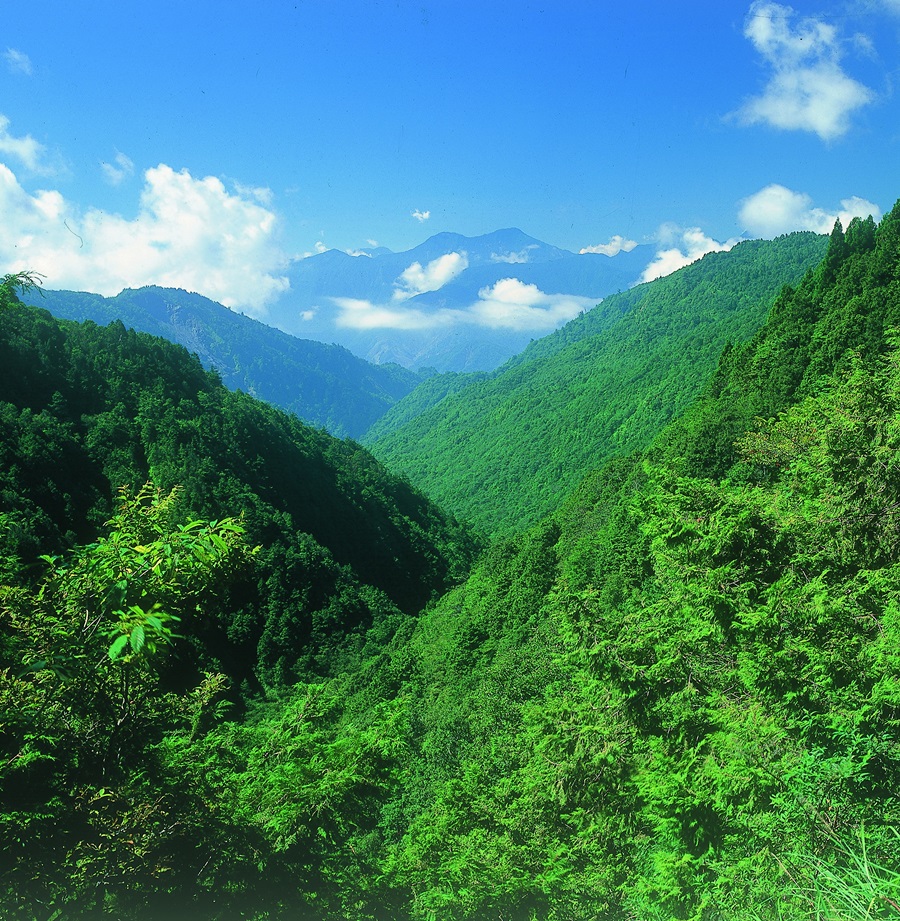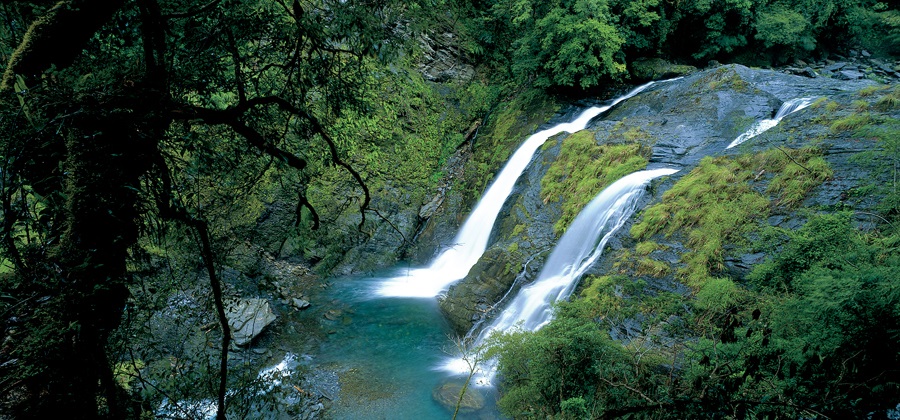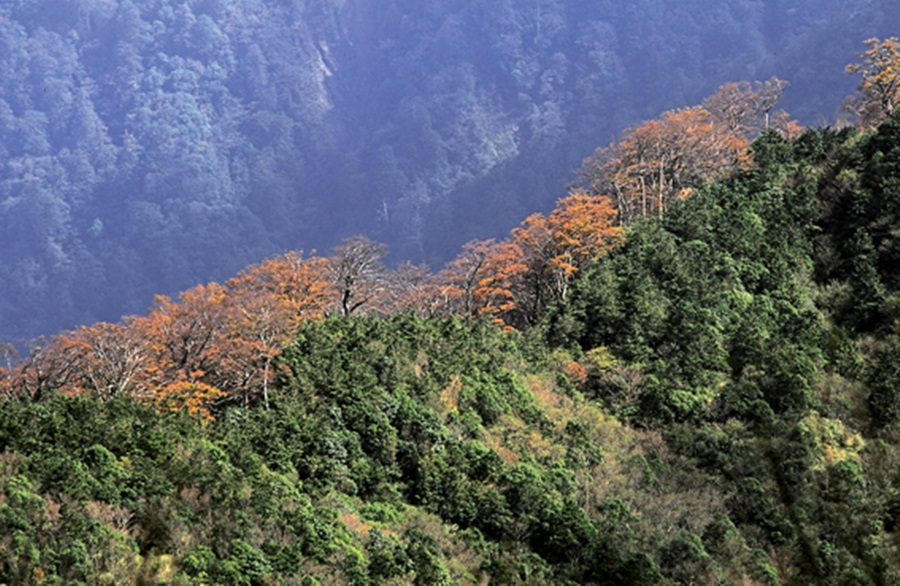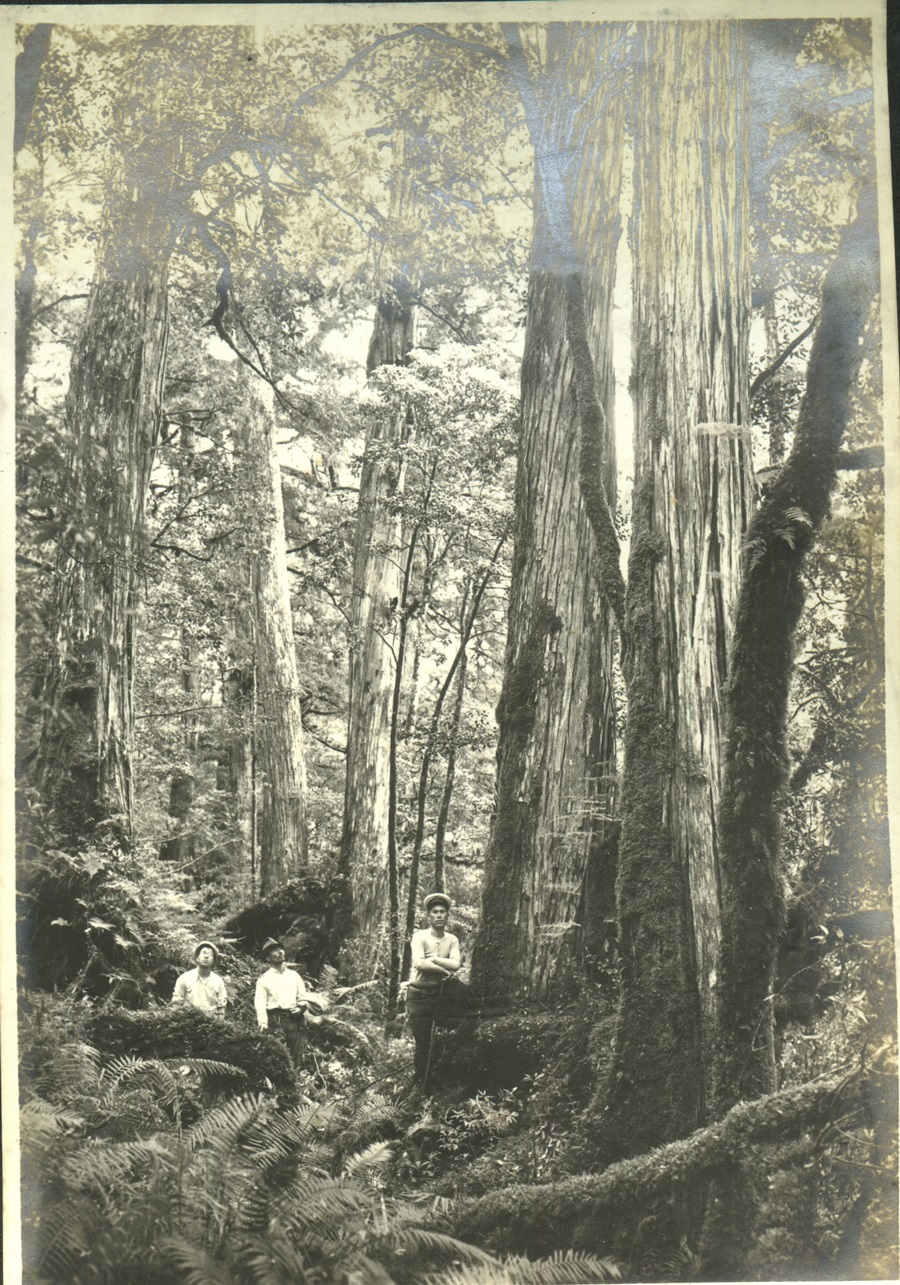About Recreation Area
Taipingshan National Forest Recreation Area is located at Datong Township, Yilan, a northeast county in Taiwan. Currently, it is managed by Yilan Branch, Forestry and Nature Conservation Agency. The tract of Taipingshan National Forest Recreation Area is very huge, reaching 12,929.52 hectares, among it, the sites of Tuchang, Jioujhihze, Jhongjian, Taipingshan, Maosing and Cueifong Lake are open to public recreation. Recreation Area is bountiful of trees constituting the green mountainous landscape, which harbors hot springs, sea of clouds, snow, waterfalls and lakes. Furthermore, the fresh air is full of phytoncides and anions given off from the plants. It is the best destination for those who aspire to embrace nature or outdoor recreations.
Mountain Range
The altitudes of Taipingshan are between 500-2000 meters. Most part of Taipingshan National Forest Recreation Area is the northern section of the Central Range, including Nanhu Mountain Range in the south and Sanshing Mountain Range in the center. The major peaks are Lilo Mountain (2,490 m), Chialo Maintain (2,319 m), Tochiatun Mountain (2,793 m), Tayuan Mountain (1,489 m). As in the north and west, where the Lanyang River drainage basin is, lies the Dabajian Mountain Range.
Terrain
The highest peak in the Recreation Area is Nanhu Mountain (3,740 m). Generally speaking, the terrain feature of Recreation Area is that elevation reduces from southeast to northeast, with high mountains and deep valleys intersecting to constitute a beautiful landscape. At the site of Tuchang, where the entrance of Recreation Area is, the elevation is 365 m; Jioujhihze, 500-850 m; Jhongjian, roughly 900 m; Taipingshan , 1,950-2,000 m and Cueifong Lake, 1,850-2,050 m. Tuchang and Jioujhihze are river valleys; Taipingshan is a forested mountain slope whereas Cueifong Lake is a high mountain lake.
Geology & Soil
The geology in this area is the Tertiary stratum of slate which is produced from the process of weathering. Prone to cleavage, the slate stratum along the riverbank often collapses or is seriously eroded during earthquakes or torrential rains. However, the humic soil derived from the weathering of slate’s bedrock is very fertile, which contributes to the lush appearance of forest in the Recreation Area.
Water Resources

There are numerous rivers and brooks flowing inside the boundaries of Recreation Area, including Towan Brook, Tien-ku-erh Brook, Fan-she-keng Brook, North Nan-ao Brook, Mohen Brook and Pu-hsiao-wan Brook, just to name a few. High mountain lakes are another precious water resource of the Recreation Area, the most famous one is the scenic Cueifong Lake; others include Sanshing Pond and Chialo Lakes.
Precious Forest

Thanks to the year-round wind coming from the Pacific Ocean and the northeast monsoon, the precipitation of Taipingshan is abundant, occurring on more than half of the days in a given year. The average humidity is above 85%. As such, Taipingshan is a paradise for plant to grow. Among them, the most precious ones are the Taiwan Cypress and Taiwan Beech.
Taiwan Cypress:On the back of Taipingshan Villa, there is a virgin forest park. In this park, you can find an old-growth Taiwan Cypress forest. Another location where virgin Taiwan Cypress forest can be discovered is the mountain slope surrounding Cueifong Lake. It is worth mentioning that, at 14.5 k of Yijhuan Route 1, there is a gigantic Taiwan Cypress about 30 m high(roughly 10 floors) and more than 2,500 years old. It takes 6 persons to encircle its trunk. Although there is a “lotus root-shaped decay” inside its trunk, it still lives vigorously.
Taiwan Beech:It is a very precious plant relic of the Ice Age. Currently, the Tungshan area of Taipingshan Forest Recreation Area is the largest habitat of Taiwan Beech in Taiwan, encompassing as large as 1,154 hectares. In autumn, its leaves turn into bright yellow, beautifully decorating the landscape.
History

In 1906, as Japanese police officers for indigenous affairs going through the defense line in Fanfan Mountain, they came along huge trees along the bank of Lanyang River. Thus was the beginning of Taipingshan’s discovery.
Following a resource investigation in 1914, the Japanese colonial government decided to develop it next year and gave the name “Taipingshan” to this area in 1915. Hence, forestry officially began in Taipingshan until 1982, when the forest management policy drastically changed. In 1983, the Taipingshan Recreation Area was inaugurated and opened to public.
Attractions and Destinations
Currently, sites that are open to public recreation include Tuchang, Ticket Station, Jioujhihze Hot Spring, Jhongjian Visitor Center, Taipingshan Villa, Maosing, Cueifong Lake and 8 Nature Trails, in that order.
Tuchang
Once the transit station for timbers, this site is now a memorial park of the forest railway. A vintage locomotive carrying timber and a railway carriage are displayed here.
Ticket Station
The entrance of Recreation Area. Visitors can buy the admission ticket at this location.
Jioujhihze Hot Spring
It is located on the bank of Towan Brook. The geothermal energy is abundant in this location. The hot spring here is rich in weakly basic calcium carbonate, which makes skin feel smooth, thus earning the reputation of “Hot Spring for Beauties”. Here you can enjoy various types of hot spring, including outdoor Hot Spring SPA, outdoor Naked Bathing Pool as well as Hot Spring Cabin.
Jhongjian Visitor Center
The name of this site is derived from its location which is between two important places—Zenze Cableway and Lantai. Here visitors are introduced to Taipingshan at the exhibition pavilion and multimedia room.
Taipingshan Villa
This is the place where most of the Recreation Area’s facilities and managing offices are situated. The eye-catching feature of this site is the 496- step central stairway guarded by two rows of Japanese maple. At the end of this stairway, you can immediately walk into the virgin Taiwan Cypress forest to enjoy the aroma of phytoncide.
Maosing
The terminal station of Bong Bong Train. Here, you can trace the tracks of trolley loading logs as well as taste the history of forest farm in the old days.
Cueifong Lake
At elevation 1840 m, it is the largest high mountain lake in Taiwan. From this site, you can choose to take the Cueifong Lake Circular Trail, Taiwan Beech Trail, Wangyangshan Trail or go to Cueifong Villa.
Nature Trails
There are 8 nature trails inside Recreation Area differing in ecological features, Jioujhihze Nature Trail, Jancing Historic Trail, Virgin Taiwan Cypress Forest Trail, Virgin Forest Trail, Taiwan Hemlock Forest Nature Trail, Maosing Reminiscent Trail, Cueifong Lake Circular Trail, Wangyangshan Trail and Taiwan Beech Trail. Following the eco-wisdom of our ancestors, all trails are designed according to their terrain and environment and constructed with local natural materials to minimize the impact on their ecosystems and views. The only facilities provided are those necessary for resting, view and safety. On the other hand, these trails are backed up by environment interpretive signs to emphasize the importance of environment and inspire the visitor to cherish the ecosystem.
- Fans Group for Taipingshan
